Through his profession, and sustained by love of sport and language, Patsy Quigg brought hurling to generations of children in the South Derry area over many decades.
PATSY QUIGG walked into St Patrick’s Maghera the day it opened – September 2, 1963.
It would have been a short journey for the young teacher to his new place of work.
Leaving Moneysharvan and Granaghan, down the Coleraine road past Gortinure and Grillagh would prove to be in great contrast to the longevity of his term and the impact he would have on generations of sporting youngsters – one of the first of which was a twelve-year-old Joe McGurk.
Having watched older brother Anthony travel a well-worn path over the Glenshane to St Columb’s in Derry, Joe McGurk was among the first of a new generation to be able to avail of the prospect of education in the locality. Having returned as a teacher fifteen years after first entering its doors, McGurk is also ideally placed to offer a perspective on the Coleraine Road College.
“The one thing about St Pat’s was that if you want to involve the kids in sport, there was never a question,” he explains. “Be it tennis or hurling or football or whatever, the equipment was bought and you got on with it.
“It’s one of the underlying themes of the school – if kids are out playing sport, well they aren’t hanging around corners and getting into trouble. In many cases it’s one of the things which provide that important inclusivity in schools.”
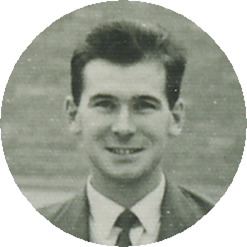
First a student, later and colleague and friend, McGurk’s relationship with Patsy Quigg has been one of the most pivotal in the emergence of Derry hurling in the modern era – the latest event in which was the 2015 county final between Swatragh and Slaughtneil.
“Patsy made a huge contribution to both Swatragh and Slaughtneil,” claims McGurk. “His two sons (Seosamh and Peadar) both played for Slaughtneil, but I suppose it was because, at that time, Swatragh hadn’t any major underage structure. The lads wanted to hurl, and Patsy wanted them to hurl, so they went to Slaughtneil. So actually, he had a foot in both camps.”
‘A foot in both camps’ is a brilliantly simple phrase that succinctly describes the contribution of Quigg to both clubs. A player with Slaughtneil, Quigg also helped the Davitts get ‘off the ground’, regularly organising to take ‘eight and nine’ youngsters to blitzes and tournaments.
Through such actions, it’s clear that Quigg’s love was the game of hurling, his passion for which was perhaps only matched by his enthusiasm for the Irish language.
“When I went to Maghera, Patsy taught Geography but he seemed to become a great Gaeilgeoir overnight,” reveals McGurk. “He seemed to always have this passion for the language, which he would have learnt from square one, and also the game at the same time. They seemed to be linked.”
With Slaughtneil and Lavey the main hurling clubs in Derry in the late 60’s, it was through the vehicle of the newly founded St Pat’s that Quigg made the greatest impact. Over the forty-three years of his teaching career, including twenty-nine as vice-principal, Quigg pioneered, developed, inspired and delighted all around him with his passion for the game.
His efforts also coincided with the arrival of Liam Hinphey in Dungiven via St Pius X. They became the captains of the engines which drove Derry hurling forward after years in the wilderness.
“Patsy’s organisational skills were key,” offers McGurk.
What Hinphey brought to kids in Banagher, Drum and Dungiven, Quigg replicated for the youth of Swatragh, Slaughtneil, Lavey and Maghera – his name now preserved for posterity with the recent dedication of the school’s Hurler-Of-The-Year trophy in his honour.
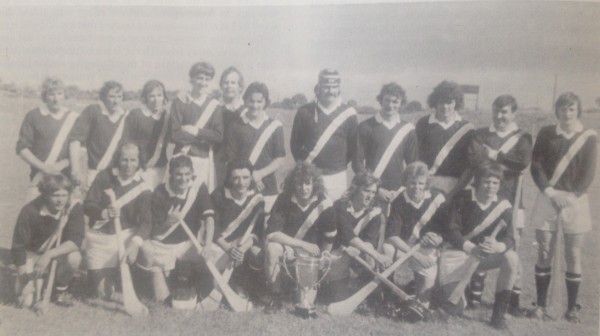
“They were very different characters, day and night actually,” laughs McGurk fondly, “but without Liam in Dungiven and Patsy in Maghera, to be honest, I don’t think the thing would ever have got off the ground.”
From that first day in 1963, Quigg’s hurling efforts in the school continued without fanfare or fuss, as Joe McGurk explains:
“It was around 1967-68 that we entered Ulster Colleges’ hurling for the first time. Patsy was the driving force behind it.”
“I returned to Maghera in 1978, and to be fair we probably hadn’t made a huge amount of progress. Yet, still throughout all those years, Patsy had been flying the flag.”
Amid years when it wasn’t chic to swing a hurl, Quigg stood firm and his pupils stood with him. McGurk’s loyalty to his former teacher is clear to see. Fuelled by Quigg’s passion for the game, the young McGurk set off on a journey through his formative years. They were also dangerous years as sectarian tensions and the issue of Civil Rights threatened to boil over.
Van Morrison’s alma mater in East Belfast was the unlikely venue for a summer hurling training camp. The draw was Edmond ‘Ned’ Power, the famous Waterford goalkeeper, described by many of his peers as ‘the greatest goalkeeper of his generation’. However, it was his reputation as a coach which attracted McGurk and many others who had been given the steer by Quigg.
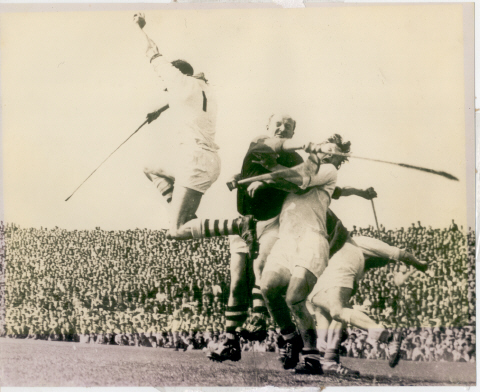
“In 1968, I remember walking through the streets of Belfast with a hurl and a sleeping bag. We were going to Orangefield School to meet Power. Looking back, you certainly wouldn’t have done that the following year,” he wryly laughs.
As ‘The Troubles’ reached their peak, McGurk would work his way through Queens University and back eventually to join with Quigg in Maghera.
Now they were colleagues and it really began; the hurling, always the hurling.
“In 1982, we entered the senior level of Ulster Colleges for the first time, and then in ’83 I had the Foresters’ Cup team. The following October we had the Mageean Cup – the first of the trophies which we won,” explains McGurk.
Kids from non-traditional hurling backgrounds suddenly got a chance to play the game and the results were extraordinary, as examination of the make-up of the first St Pat’s team to win the Foresters’ Cup reveals:
“Enda Gormley was on the team, Danny Quinn was on the team, Damien Cassidy was on the team and Dermot McNicholl was on the team. And they were all cracking hurlers,” exclaims McGurk. “Cassidy in particular was a brilliant hurler. His mother was Kearns from Dunloy.
“They would have been playing with Seamus and Henry Downey and our Colm and John. When you look back, it was kind of an All-Star outfit we had playing hurling at the time!

“There are a number of people who stick out in your head throughout those schools years: Seamus Downey was one – an absolute genius with a hurl, but Geoffrey McGonigle was something else. His French might not have been what it could have been, but out on the field, he had that much ability with the hurl, he could nearly make the thing talk,” says McGurk of the St Pat’s icon of the time.
“I remember watching Geoffrey in an Ulster final at Casement – going up and trapping a ball into his hand with the hurl at lightning speed. It was amazing for those watching, but I had seen the same thing maybe fifty or sixty times at school. If Seamus Callanan or Richie Power had done it, the whole country would be marvelling at it.”
That first Mageean win set in motion a series of a further eleven senior titles and established the rich tradition which now helps to sustain and develop hurling in the county, feeding into its clubs and vice-versa.
Without Quigg, who knows?
Perhaps the greatest tribute of all was paid by the late James O’Kane in openly regarding the banquet held in celebration of his own O’Keefe Cup (All-Ireland senior colleges) winning team of 2006 as being ‘a night in honour of Patsy Quigg and Joe McGurk’.
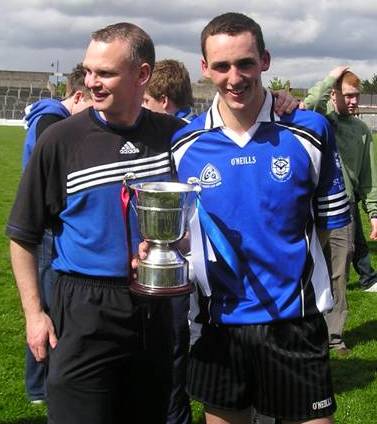
McGurk, who visited his friend and colleague in his ‘final months’ reflects on events and times where the joy was quieter, more sustained and with less fanfare.
“Patsy was a very gentle sort of person. It was always obvious that the kids appreciated him and what he did for them; I have absolutely no doubts about that.”
With the school a split-site between Coleraine Road and the girls’ college, St Mary’s on the Glen Road, tournaments were held at the latter on the first Saturday of each June.
“It was the first years, always the first years which Patsy religiously took under his wing.
“When you think about it, with the underage club structures not what they have now become, Patsy Quigg would have provided the first introduction to the game of hurling for many hundreds of kids.”
Worth thinking about.
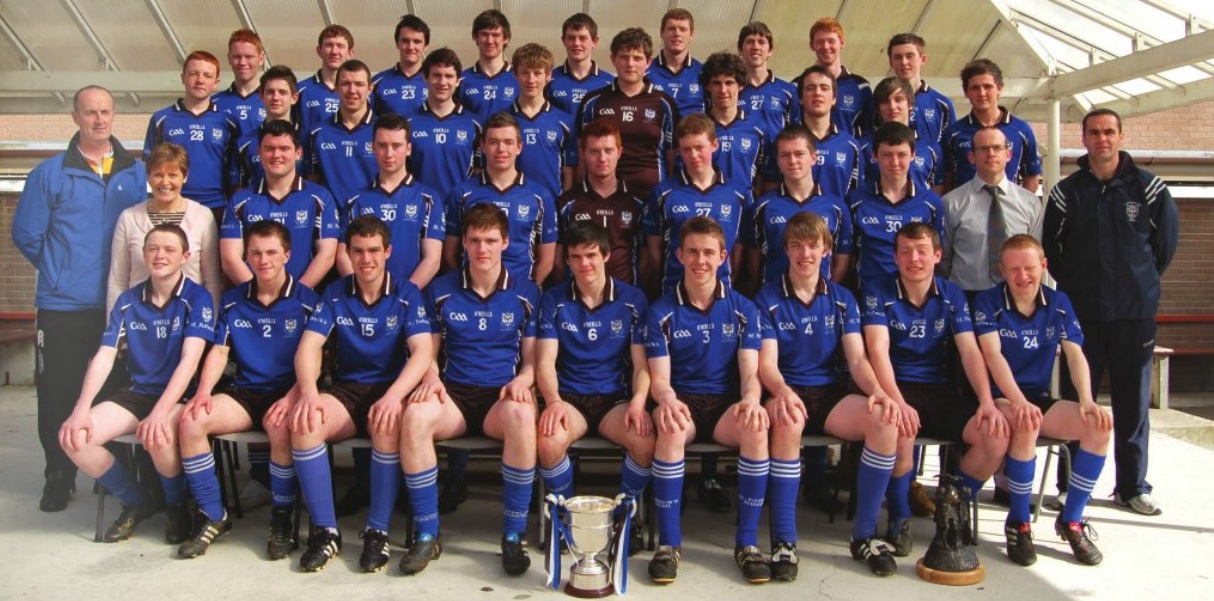


[…] >>>>>Read the full story here <<<<< […]